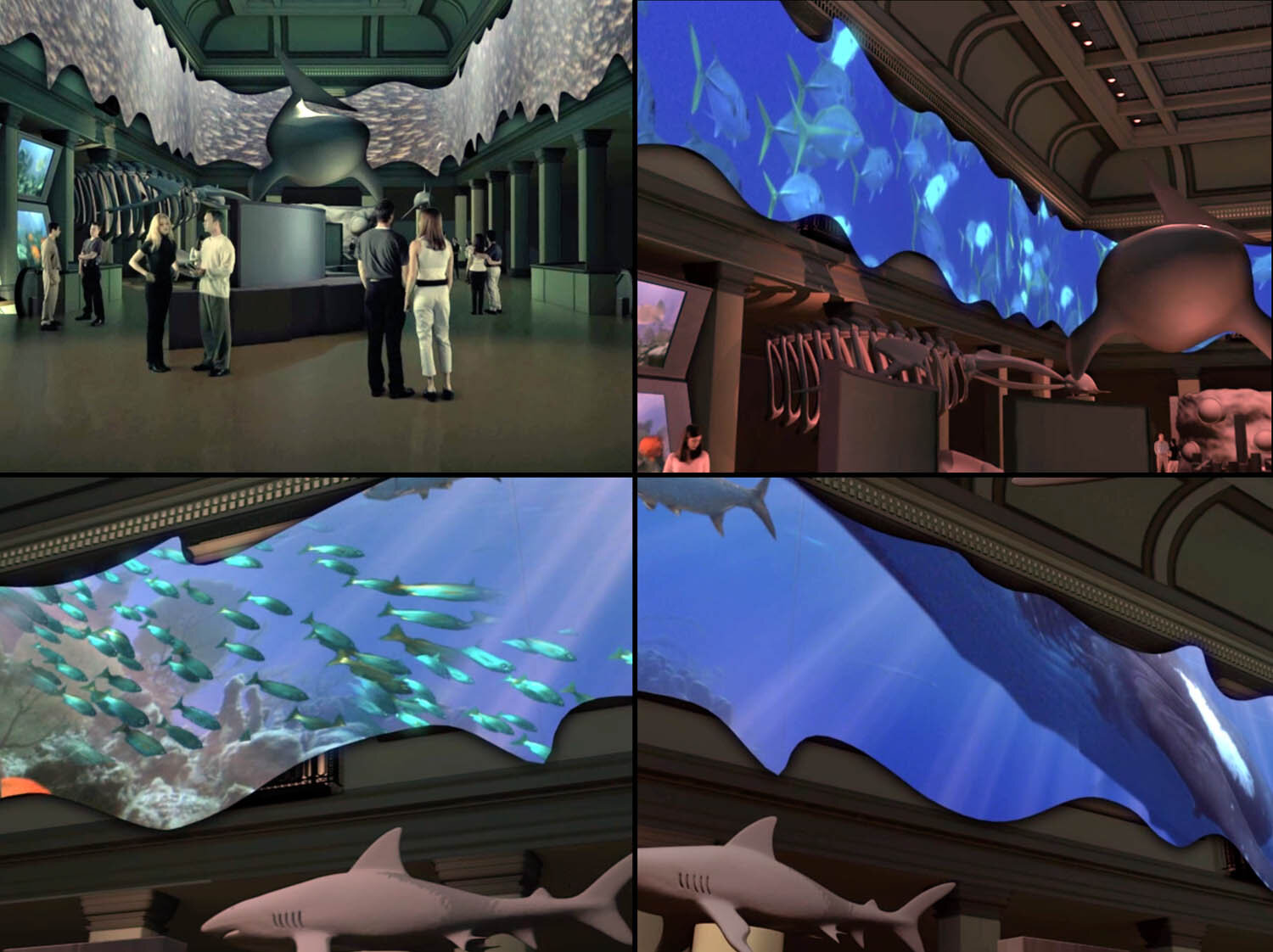
This initial concept sketch explores the idea of wrapping seamless motion picture footage around the entire gallery. From this sketch, GPG engineers developed a technique to merge multiple motion pictures together into an ultra-wide media piece.

Keyframes from our computer animatic show how different vantage points enable a variety of perspectives. This immersive underwater motif is what the museum desired, both to attract visitors into the gallery, and as a backdrop to dimensional exhibit elements.

Ultra-wide aspect media created by our team from conventional 16:9 suboceanic content. Each horizontal strip displays a section from the completed motion picture media.

The completed Ocean Hall, with a modified media display configuration to comply with museum architectural and educational preferences.
Smithsonian Ocean Hall
Ultra-wide panoramic projection of undersea life
• Original raw media footage was a conventional aspect ratio of 16:19
• Media content was able to be extended to wrap around the entire gallery
• Multiple projectors mounted above the ceiling enabled the display
• A sensation of swimming undersea with creatures was the goal
• Projected imagery serving as a backdrop to ground-level exhibits
<- Arrows on left & right of image strip scroll images ->
The National Museum of Natural History at the Smithsonian Institute (Washington, D.C.) opened the expansive Ocean Hall gallery in 2008. GPG conceived innovative methods of presenting motion picture media around the upper areas of the gallery.
Our pre-visualization team produced several photo-realistic concept “animatics” to display the stunning high definition motion photography of digital cinematographer Feodor Pitcairn. GPG software engineers created a technique to convert conventional 16:9 format HD media into a first-of-its-kind 350 ft. long 24:1 immersive experience. This technique enables whales to be presented at their life-size scale, and for swarming schools of fish to envelop the entire gallery.
Our multiple projector system takes existing projection and server technology, applying it in an innovative way – something GPG has become known for. Our media extension technique enables any high definition source of any aspect ration to become a projection-based wrap-around encounter. Immersive imagery goes beyond the limitations of framed content. When it comes to the vast expanse of subsea environments, this display technique was the ideal solution.

